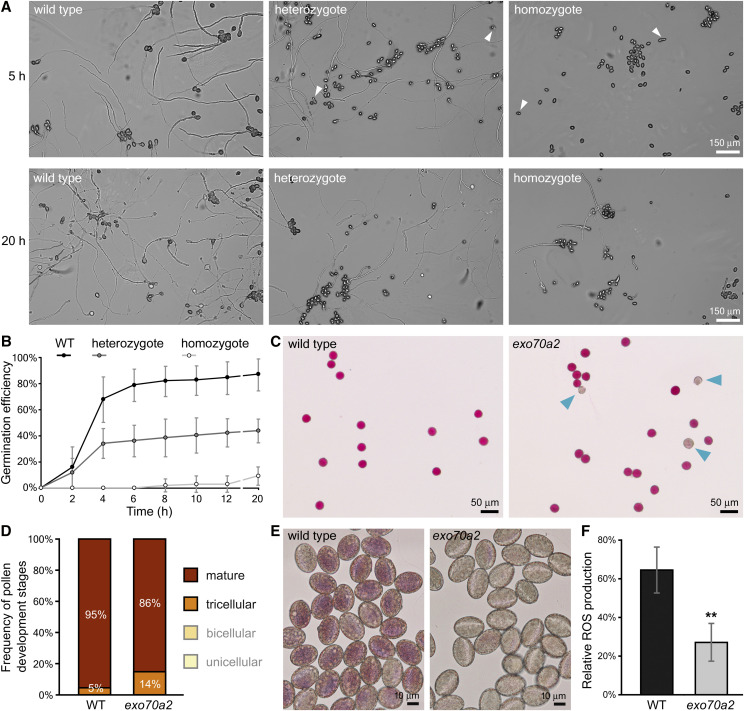Figure 2.
In vitro pollen germination and maturation defects of exo70a2 mutants. A, Representative micrographs of in vitro germinated pollen from wild-type (WT) and heterozygous and homozygous exo70a2 mutant plants 5 and 20 h after imbibition. Arrowheads indicate germinated mutant pollen tubes based on their aberrant morphology. All images are at the same scale. B, In vitro pollen germination efficiency at different time points (10 samples originating from five different plants were evaluated for each genotype; error bars represent the mean ± sd). C, Representative micrographs showing pollen viability assessed by Alexander’s staining. Nonviable pollen grains are indicated by arrowheads. D, Quantification of wild-type and exo70a2 pollen at different stages of development in open flowers (n > 204; P = 0.0001, χ2 test). Pollen was harvested from five plants of each genotype; the experiment was repeated in three biological replicates. E, ROS production 20 min after pollen imbibition as visualized by NBT staining. F, Quantification of ROS staining (in E) in wild-type and exo70a2 pollen grains (error bars represent the mean ± sd; n > 53). Asterisks indicate statistical difference using Student’s t test (P < 0.001). Pollen was harvested from five plants of each genotype; the experiment was repeated in three biological replicates.

